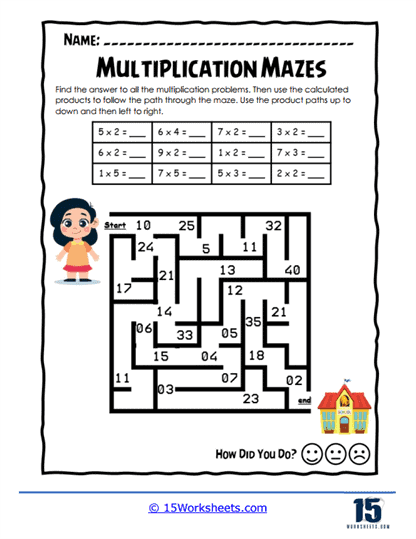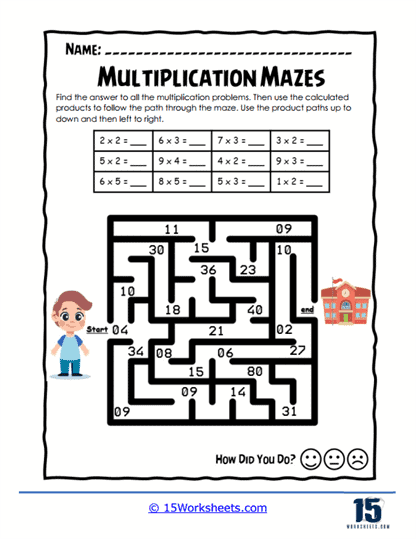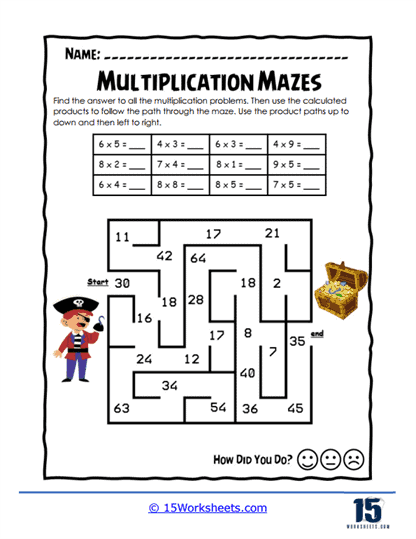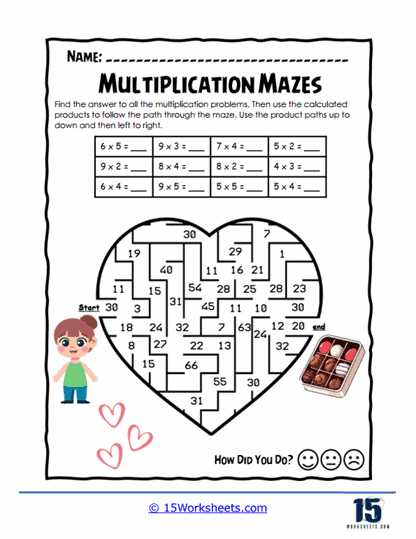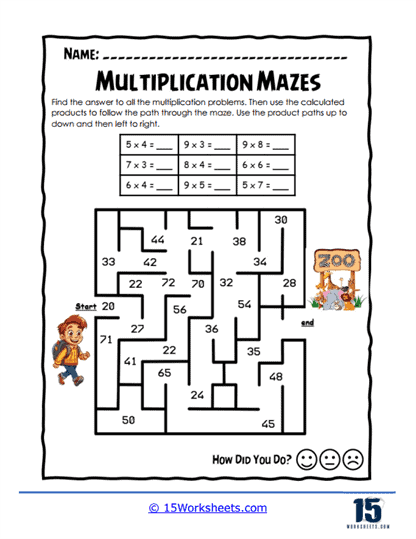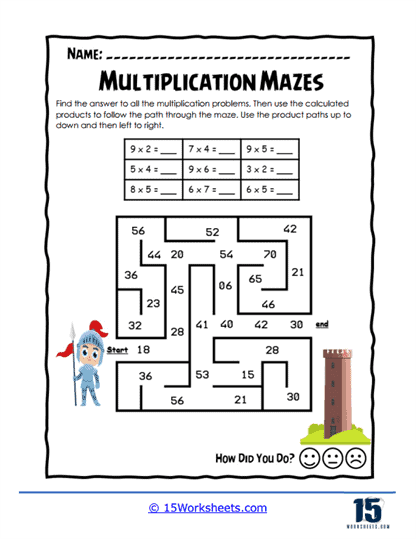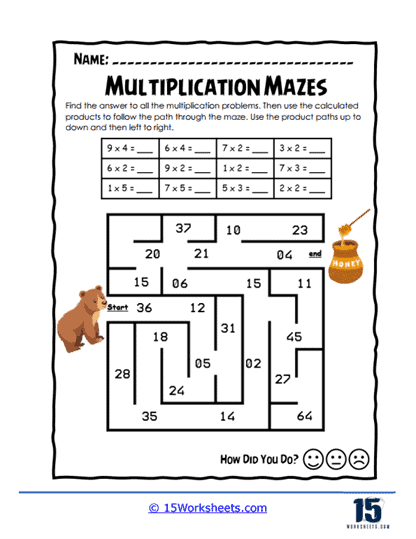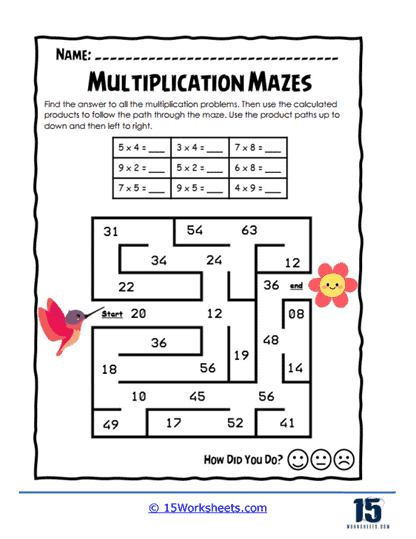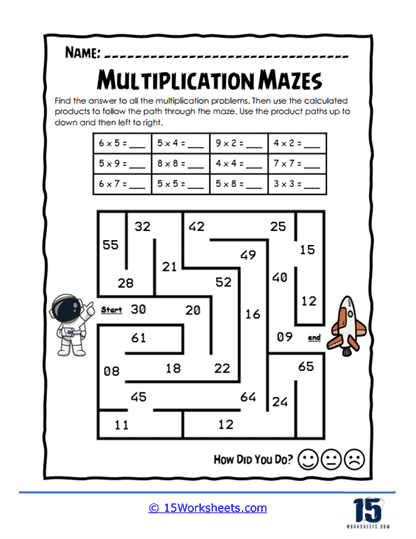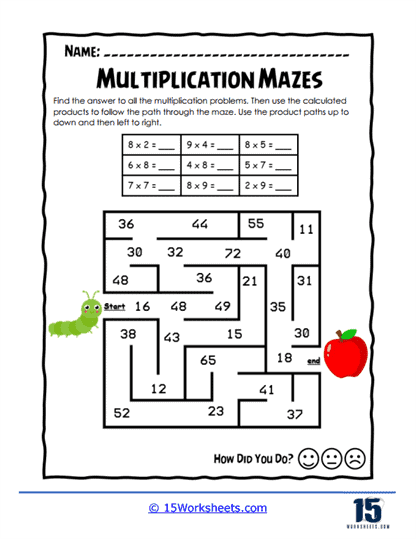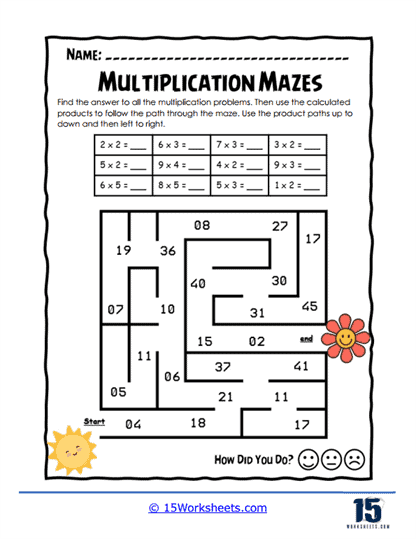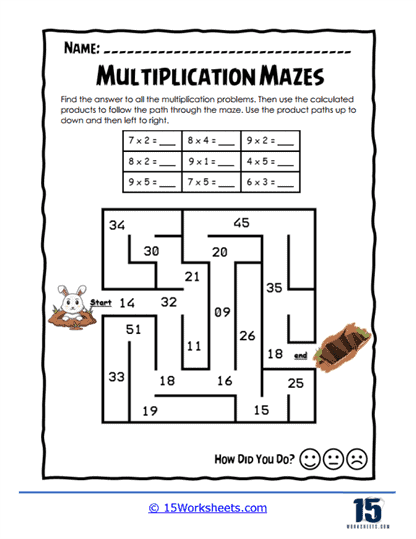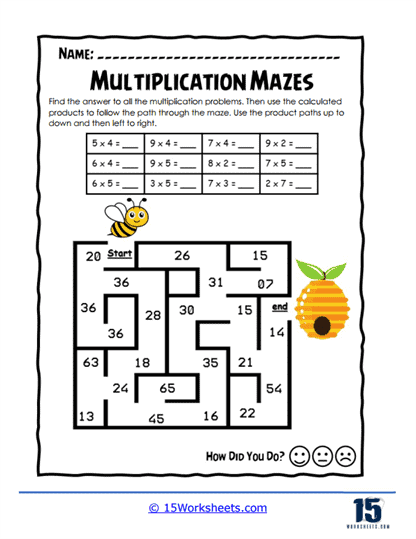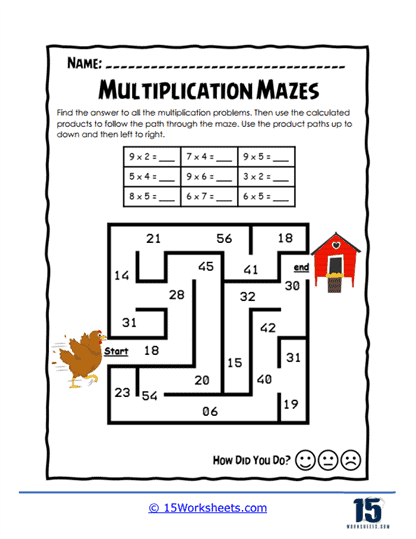Multiplication Mazes Worksheets
About These 15 Worksheets
These maze worksheets are a creative and engaging way to help students practice and reinforce their multiplication skills. These worksheets combine the challenge of solving multiplication problems with the fun of navigating through a maze. As students work their way through the maze, they must correctly solve multiplication problems to progress, which adds an element of excitement and motivation to their learning experience. These worksheets are particularly useful for elementary and middle school students who are building their foundational multiplication skills, though they can also be adapted for more advanced learners.
You’ll find a variety of features that all serve the common goal of reinforcing multiplication skills. The most prominent feature is, of course, the maze itself. The maze usually consists of a grid or a pathway that students must follow. Each correct multiplication answer leads them in the right direction, while incorrect answers could lead to a dead end or an incorrect path. This setup encourages students to double-check their work and ensures that they are not just guessing the answers but really engaging with the math.
In the maze, each intersection or point of decision typically presents a multiplication problem. These problems can range in difficulty depending on the grade level and the learning objectives of the worksheet. For younger students or those just beginning to learn multiplication, the problems might involve single-digit numbers (e.g., 3 x 4, 7 x 6). For more advanced students, the problems could involve multi-digit numbers (e.g., 12 x 15, 23 x 34), or even introduce more complex concepts such as multiplying by multiples of ten or hundred (e.g., 40 x 50, 200 x 30). By varying the difficulty, teachers can tailor these worksheets to meet the needs of their students.
Some the worksheets incorporate visual elements to further engage students. For instance, the maze itself might be shaped like a familiar object, character, or theme, such as an animal, a pirate’s map, or a space journey. These thematic elements can make the worksheet more appealing, especially for younger students who may be more motivated to complete a task when it’s presented in a fun and imaginative context. Additionally, these visual elements can serve as a subtle cue to reinforce the idea that learning math can be enjoyable and creatively stimulating.
Within the context of these worksheets, several key math skills are being taught and reinforced. First and foremost is basic multiplication fluency. The repetitive nature of solving multiplication problems as students navigate the maze helps to reinforce their ability to recall multiplication facts quickly and accurately. This is crucial, as fluency in multiplication is a foundational skill that supports more advanced math topics, such as division, fractions, and algebra.
Another important skill being reinforced is problem-solving. Because the maze requires students to think about which direction to take based on their answers, they are also practicing their problem-solving abilities. They must consider the consequences of their choices, think ahead, and sometimes retrace their steps if they make a mistake. This process mimics real-world problem-solving situations, where one must evaluate options, make decisions, and learn from errors.
Critical thinking is also a key component of these worksheets. When students are faced with multiple-choice options, they must critically evaluate each possible answer rather than just solving the problem and moving on. This requires them to engage with the math on a deeper level, considering not just the multiplication process but also the plausibility of each answer in the context of the problem. This skill is particularly important as students progress in their math education, where they will encounter more complex problems that require thoughtful analysis and reasoning.
Another variation you might encounter in these worksheets is the use of puzzles or riddles that can only be solved by completing the maze. For instance, solving the maze might reveal a hidden message or a picture, or it might provide the clues needed to answer a riddle. This type of worksheet can be particularly engaging for students who enjoy puzzles and riddles, and it adds an additional layer of motivation to complete the math problems accurately. These elements can help students develop perseverance and attention to detail, as they work towards the reward of solving the puzzle or uncovering the hidden message.
In terms of classroom application, teachers often use Multiplication Maze worksheets as a fun review activity or as part of a math center where students rotate through different math tasks. They can be used as a warm-up activity to get students’ brains engaged at the start of a math lesson or as a cool-down at the end of class to reinforce the day’s learning. Because they are self-contained and can be completed independently, they are also great for homework assignments or for use in a flipped classroom setting, where students practice basic skills at home and focus on higher-order thinking in class.
For differentiated instruction, teachers can easily modify our multiplication maze worksheets to suit different learning levels. For struggling students, the maze might include simpler problems or provide hints along the way, such as a partially filled-in multiplication table. For advanced students, the maze might include more complex problems or additional challenges, such as requiring them to write out the steps they used to solve each problem. This flexibility makes the worksheets a great tool in a diverse classroom, where students may be at varying levels of proficiency.

